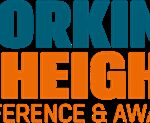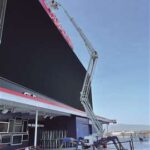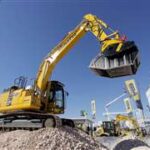Choosing the Best Option Based on Your Project Needs
When it comes to selecting the best scissor lift for your project, it’s crucial to understand the two primary types: slab and rough terrain scissor lifts. Both of these lifts serve different purposes based on the environment and type of work they are required for. Let’s break down these options in terms of usage, features, maintenance, and costs, so you can make an informed decision.
Slab Scissor Lifts
Slab scissor lifts are best suited for indoor environments, where you’re working on smooth, flat surfaces. These lifts feature compact designs and are ideal for confined spaces. They’re typically electric-powered, offering a quiet operation with zero emissions, making them perfect for use in buildings with sensitive environments like hospitals, warehouses, or schools.
In terms of performance, slab scissor lifts are limited by their lift capacity and platform size. They are capable of reaching heights ranging from 19 to 50 feet and can lift up to 2,250 lbs. These lifts are mainly used for light-duty tasks such as ceiling and overhead installations, electrical work, and general maintenance. However, slab lifts are not suited for handling heavy lifting or outdoor use.
Rough Terrain Scissor Lifts
On the other hand, rough terrain scissor lifts are designed to handle the challenges of outdoor environments. These lifts are equipped with larger pneumatic tires and are typically powered by diesel engines, making them more suitable for rugged terrains. They have higher lifting capacities (typically ranging from 500 to 2,500 lbs) and can reach heights from 19 to 50 feet, just like slab lifts. However, what sets them apart is their ability to maneuver over rough, uneven surfaces, making them perfect for construction sites, outdoor infrastructure projects, and landscaping.
A key benefit of rough terrain scissor lifts is their ability to handle heavy-duty tasks, such as carrying multiple workers and equipment. These lifts are typically more robust and can support more weight, providing more flexibility for industrial projects that require a sturdy work platform.
Maintenance Considerations
Maintenance for slab and rough terrain scissor lifts differs due to their design and usage environments.
-
Slab Scissor Lifts: These lifts primarily require battery maintenance. Regular checks on water levels, battery charging, and ensuring that the lift is being used properly can minimize the risk of downtime and extend the life of the lift. Their electric-powered operation means fewer moving parts, which in turn reduces maintenance complexity and cost. Typically, slab scissor lifts have lower maintenance expenses, as they don’t require servicing of diesel engines or extensive mechanical components.
-
Rough Terrain Scissor Lifts: Since these lifts are designed for outdoor use, they face tougher conditions. Diesel engine maintenance is a priority, along with regular checks on hydraulic systems and pneumatic tires. These lifts tend to have higher maintenance costs due to their exposure to dirt, dust, and other harsh environmental factors. Additionally, diesel-powered engines require regular oil changes, fuel system maintenance, and inspections to ensure proper operation.
Cost Comparison
In terms of cost, slab scissor lifts are generally more affordable upfront compared to their rough terrain counterparts. Their simplicity in design and electric-powered operation make them less expensive to purchase. However, over time, rough terrain scissor lifts may offer better value for outdoor applications due to their durability and higher lifting capacity. When comparing long-term costs, rough terrain lifts typically incur higher service costs, given their diesel engines and need for more frequent maintenance.
Final Thoughts
Choosing between a slab and a rough terrain scissor lift ultimately depends on the environment, task at hand, and project scope. If your work takes place indoors on smooth surfaces and you need quiet, emission-free operation, a slab scissor lift is the right choice. However, if you’re working on construction sites or in rugged terrain, a rough terrain scissor lift will offer greater versatility and capability for handling demanding tasks.




